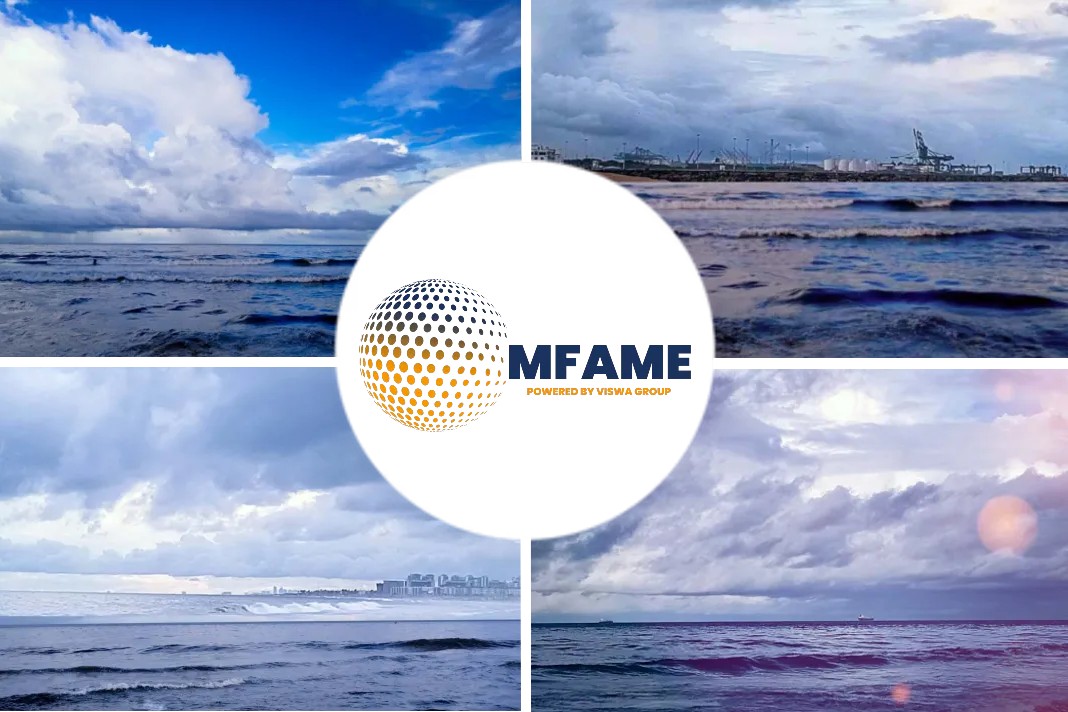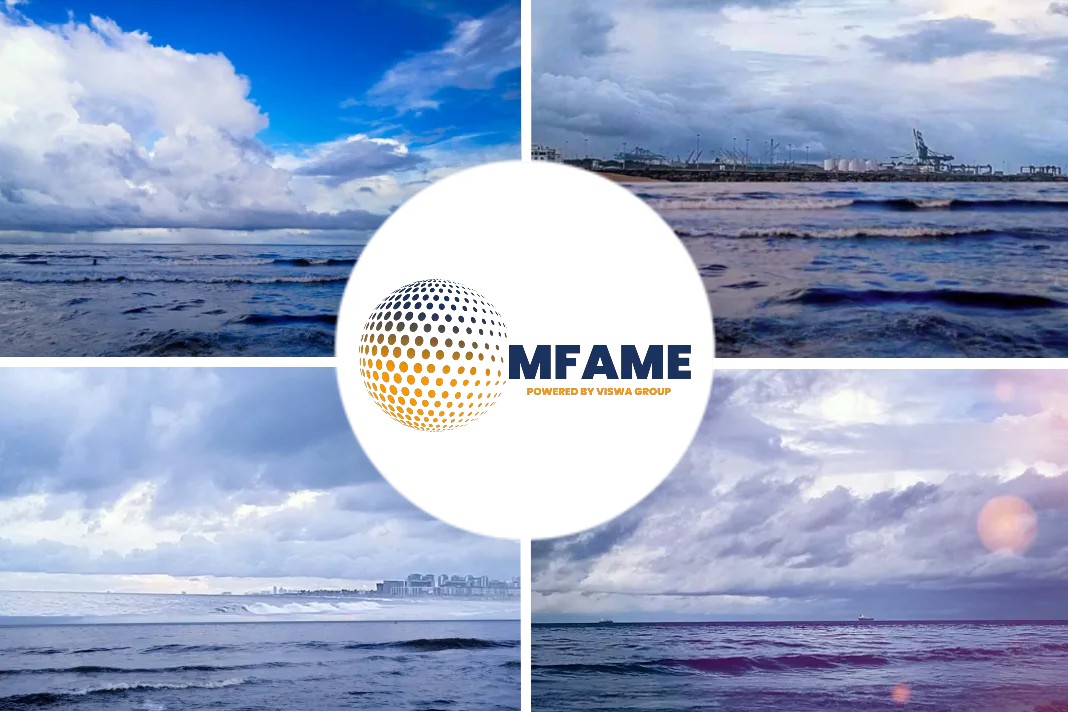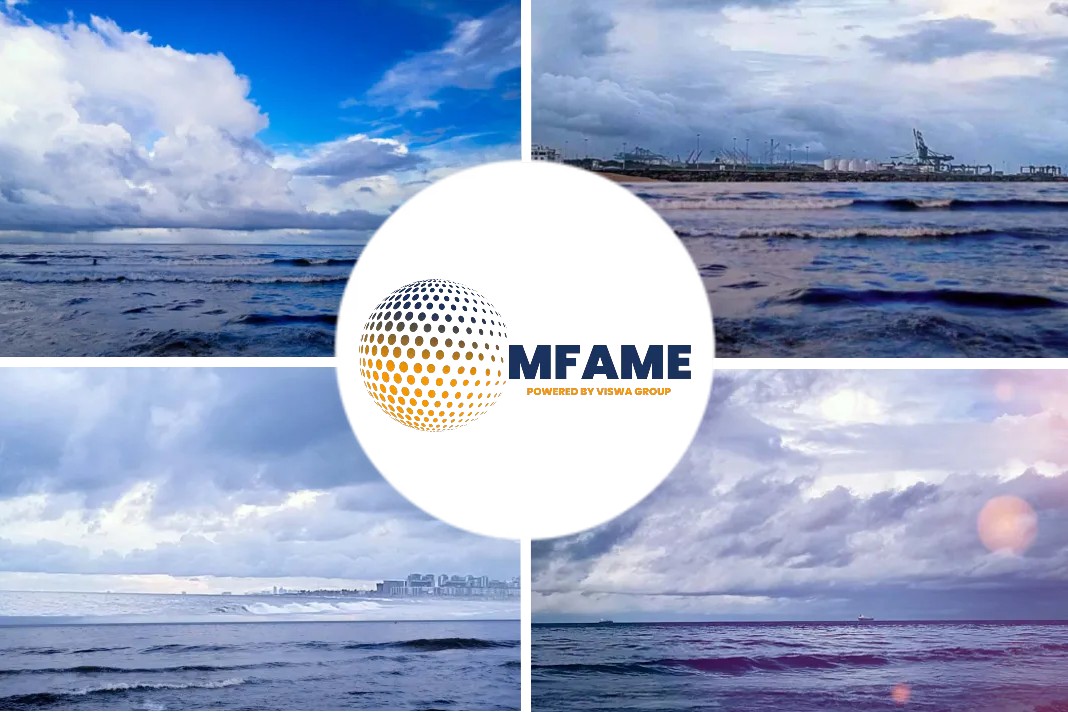- Though stainless steel and GRP will ensure scrubber quality, coatings may be required in some areas such as discharge nozzle to mitigate corrosion.
- For compliance in areas where the discharge of scrubber washwater is banned, less than 2% of these units will be closed-loop systems and 20% are likely to be hybrids.
- SOx captured in the exhaust gases dissolves in the washwater and can form strong acids, lowering the pH of the washwater.
- Bottom and top portions of a scrubber tower can be subjected to a high level of acidic corrosion.
- Closed-loop system, as the washwater is re-circulated, and is dosed from the alkali tank and there is a risk of alkaline corrosion as a result.
- Glass Reinforced Polyester (GRP) piping for the washwater discharge section from the scrubber tower outlet, as no coatings are required.
Coatings may be required in parts of scrubber to maintain and mitigate corrosion, says Don Gregory, Director ECGSA. For an article published in Riviera Maritime Media, M Kalyanaramam writes on Don Gregory’s ideas on scrubber maintenance.
Here’s an excerpt from that article.
Mitigate corrosion
Though the use of stainless steel and GRP will ensure quality, coatings may be required in some areas of scrubbers such as discharge nozzle to mitigate corrosion.
IMO 2020 compliance
Open-loop hybrid system
To meet the requirements of the 2020 sulphur cap, some 4,000 ships are using scrubbers. The majority are open-loop hybrid systems whose washwater is discharged all overboard.
Closed-loop system
DNV GL estimates that to ensure compliance in areas where the discharge of scrubber washwater is banned:
- less than 2% of these units will be closed-loop systems,
- 20% are likely to be hybrids – a combination of open-loop and closed-loop systems.
Washwater and scrubber material
SOx captured in the exhaust gases dissolves in the washwater and can form strong acids, lowering the pH of the washwater.
The specification of scrubber material and coatings is becoming a major industry concern as more cases are reported on scrubber washwater pipelines developing cracks and leaks.
Corrosion and high temperatures
Flow of acidic washwater
- While washing the exhaust gas of the engine, the sulphurous exhaust gas is streamed into the lower portion of the scrubber as the washwater is introduced as a spray.
- The acidic washwater flows down the walls of the scrubber tower.
Acidic corrosion
- In a typical scrubber tower, the bottom portion can be subjected to high levels of acidic corrosion.
- The top portion also experiences acidic corrosion, though to a lesser degree, since not all the SOx is removed.
- Residual sludge removed from the washwater is fed to a tank for eventual disposal to the shore, while the associated pipework can experience acidic corrosion.
Alkaline corrosion
- In a closed-loop system, the washwater is re-circulated.
- The make-up water is dosed from the alkali tank and there is a risk of alkaline corrosion as a result.
What is the IMO guidelines on washwater?
IMO guidelines require the washwater to be neutralised and diluted with additional seawater so the pH level is more than 6.5 before discharge.
The proper operation of these systems is critical given reports of corrosion damage stemming from scrubber washwater.
Coating challenges
Safinah Group titled presented a technical paper titled “The coating challenges posed by scrubber system installation”. This covers points to potential damage to the anti-biofouling coatings on the hull.
IMO guidelines
IMO guidelines require the pH to be 6.5 at4 m from the discharge point when the ship is stationary.
Biocidal antifouling systems damage
The paper says the binder existing in some biocidal antifouling systems could be damaged if the washwater is not neutralised to levels close to 6.5.
The three key scrubber materials
The paper lists three key requirements for the materials that go into scrubber systems:
- corrosion resistance;
- acid resistance; and
- high temperature performance.
What is corrosion?
Electrochemical process
Corrosion is an electrochemical process that degrades the material and can occur in all seawater pipelines, such as in the water supply to the scrubber tower.
Acid attack
Acid attack occurs in environments with lower pH and the scrubber tower is an area where acid attack can be severe. Acid attack is a challenge across the overboard pipeline system too, where corrosion is an additional challenge.
Temperature range
According to the Safinah Group paper, in the scrubber tower, the temperature could be in the range of 50°C to 60°C, whereas in the overboard pipeline it could be less than 40°C.
If scrubber systems do not have an exhaust gas bypass, the tower would be subjected to higher temperatures.
Recommendation
The paper recommends the use of appropriate coatings in addition to the proper selection of scrubber system materials.
Material selection and good quality fabrication
Despite the concern highlighted above, Exhaust Gas Cleaning Systems Association director Don Gregory denies the issue of corrosion and acid attack.
He believes a quality scrubber supplier will ensure the right materials are chosen for the scrubber system and sees a need for coatings only in the overboard discharge section, where the washwater could impact on the hull coating.
Scrubbers in use for decades
Mr Gregory says that scrubbers have been part of inert gas systems on tankers for many decades and the industry has learned to design and operate them safely.
He adds however, that many of the scrubbers fitted on tankers use diesel exhaust from boilers, which has far less sulphur content and corrosive properties.
Stainless steel towers
Mr Gregory says scrubber towers should be made of stainless steel, which is among the most corrosion- and acid attack-resistant materials available. If towers are made of stainless steel there is no need for coatings.
Passivity destruction
Mr Gregory, notes that the fabricator should know to deal with stainless steel. As the powerful layer of passivity that provides the resistance, is just a few nanometers thin and can be destroyed by fabrication mistakes.
He said, “There is a prescribed process to handle stainless steel which should be adhered to.”
Mistakes during fabrication
Mr Gregory’s point is well illustrated in a white paper by Sverdrup Steel titled “Scrubber material selection and fabrication challenges”.
Welding
The paper highlights the significance of mistakes made during fabrication, especially during welding.
Welding defects may introduce crevices, destroy the passive layer and introduce contaminants, all of which could contribute to the failure of scrubber material.
Alloy composition
An appropriate mix of the alloy composition of the stainless steel is crucial. Nickel, chromium, molybdenum and nitrogen content must be correctly balanced.
Recommendation
The paper recommends using special stainless steel with high temperature acid- and chloride-resisting alloys, such as nickel in the lower part of the scrubber.
The paper says that the lifespan of a marine scrubber system depends significantly on the chosen material, its corrosion resistance and the manufacturing process performed.
Glass Reinforced Polyester (GRE) piping
Mr Gregory recommends the use of Glass Reinforced Polyester (GRP) piping for the washwater discharge section from the scrubber tower outlet, as no coatings are required.
He added saying, as the use of such materials is not allowed in the discharge section, those steel sections would require coatings.
Mr Gregory says GRP’s coefficient of expansion is different from steel, so GRP pipes should not be clamped with steel piping, which could result in premature failures.
A boost to scrubber life
Jotun Marine Coatings’ explains that many of the materials used in scrubbers are made up of corrosion-resistant material, GRP or high-grade stainless steel.
Associated costs
It says due to the associated costs there are many parts which use less corrosion-resistant material, like mild steel and lower grade stainless steel (254SMO). These areas need protective coatings to ensure a long operational period without breakdowns.
Location of such materials
The locations where such materials can be found include
- the scrubber exhaust,
- scrubber tank internals,
- various tanks, and
- the scrubber outlet nozzle.
Jotun Marine Coatings’ global marketing manager for newbuild, Ismail Tan, says coatings are required in addition to high-quality material. “Our target is that the scrubber should last the entire vessel’s life,” says Mr Tan.
Open-loop scrubber system
For an open-loop scrubber, which is the simplest system with no tanks, the highest corrosion risk areas are the outlet nozzles that go into the sea.
Mr Tan explains that
- This is not only a corrosion risk but also a biofouling risk, as the discharge can affect surrounding areas coated with antifouling coatings.
- So the scrubber coatings used must withstand both acidic conditions as well as being immersed constantly in seawater.
Closed- and hybrid-systems
Mr Tan says tanks used in closed- and hybrid-systems are typically made of mild steel and need coatings.
He added saying that for the scrubber main unit, many of their customers want an additional protective coating over the industry standard, stainless steel, to make it long lasting. “Coatings are a value addition.”
Blasting away coatings in hazardous environments
ATEX (explosion proof)
ATEX (explosion proof) is the European standard for all equipment used in hazardous locations, including oil and gas installations and refineries. It is typically used in environments where an explosive atmosphere can be anticipated. Offshore platforms and ships with oil, gas or LNG cargo often need to employ ATEX equipment.
Maintenance and repair
The coating structures on these installations, platforms or ships require regular maintenance, conducted either in dry-dock, or when the vessel is on the ocean. Repairs are conducted using either manual paint removal tools or blasting equipment.
Zone 1 equipment
Ecoquip blasting equipment is approved for use in Zone 1 for hazardous vapours, where a presence of the gas of class IIa (propane family) is present. This is documented in the manufacturers “Declaration of conformity” with the proper ATEX directives and classifications.
ATEX regulations and directives do not specify a standard against which to test the safety of applications.
GEXCON for standards
As such, Ecoquip contacted GEXCON, a company that specialises in testing equipment to test the blasting application.
A number of tests were specified with different abrasives on different substrates, inside a confined, hazardous area (in this case a container filled with N hexane) to determine if the sparks generated from the impact of the abrasive on the substrate could cause an ignition.
After a series of tests, GEXCON concluded that wet abrasive blasting technology is a safe way of removing paints/coating on platforms or gas-transporting ships.
A cheaper alternative to titanium
There are two major criteria to assess the corrosion resistance of stainless steel against saltwater:
- Pitting Resistance Equivalent Number (PREN) and
- Critical Pitting Temperature (CPT).
Both the criteria depend on the composition of the material.
Practical test
A practical test to assess the corrosion resistance is the salt mist test according to IEC 60068-2-52:1996. Exact testing procedures to measure PREN corrosion resistance of various types of stainless steel are specified in the ASTM G48 standard.
ASTM G48 standard
Generally, the higher the PREN value, the more corrosion resistant the steel is. Steels with PREN values above 32 are considered seawater (corrosion) resistant.
Different methods are used to assess CPT, which is defined as the “lowest temperature on the surface of the specimen at which stable propagating pitting occurs under specified test conditions” (ISO 17864:2005). Rules of thumb assess this measure based simply on the molybdenum content of the material.
- The CPT of 1.4404 (AISI316L) is between 24 and 27.5°C compared to 27.5 to 34.5°C of 1.4462 duplex steel.
- Therefore, for higher seawater temperatures, such as in tropical waters, 1.4462 could be a safe choice.
- This offers much better corrosion resistance than AISI316L but costs less than titanium.
- However, for even higher temperatures, high salt concentration or other corrosive contents of the liquid, there is still only one safe choice: titanium.
Advantages of titanium
The big disadvantage of titanium is the very high cost of both the material itself and the machining cost. Therefore, engineers look for more cost-effective solutions which still fulfill the requirements of the application.
- In many cases, 1.4404 (AISI316L) is used as it offers a reasonable corrosion resistance at a low price, just slightly above basic stainless steel such as 1.4305.
- But experience in the field shows that pressure transmitters with this material can fail before time due to corrosion.
- Typically, the higher the temperature and/or the higher the salt or corrosive content is, the faster it fails.
Pressure transmitters with ceramic sensors
Trafag offers pressure transmitters with ceramic sensors and process connection and housing made of 1.4462 duplex steel for such applications.
- A pressure transmitter made of duplex steel 1.4462 could be a solution, but the cost of duplex steel is slightly higher, and the machining of duplex steel adds to the cost.
- Due to its mechanical properties, the material causes excessive wear on tools and slows down machining speed.
- Engineers need to carefully assess the risks of the application and find a balance between higher cost and improved performance, i.e., corrosion resistance in this case.
Did you subscribe to our daily newsletter?
It’s Free! Click here to Subscribe!
Source: Riviera Maritime Media

























